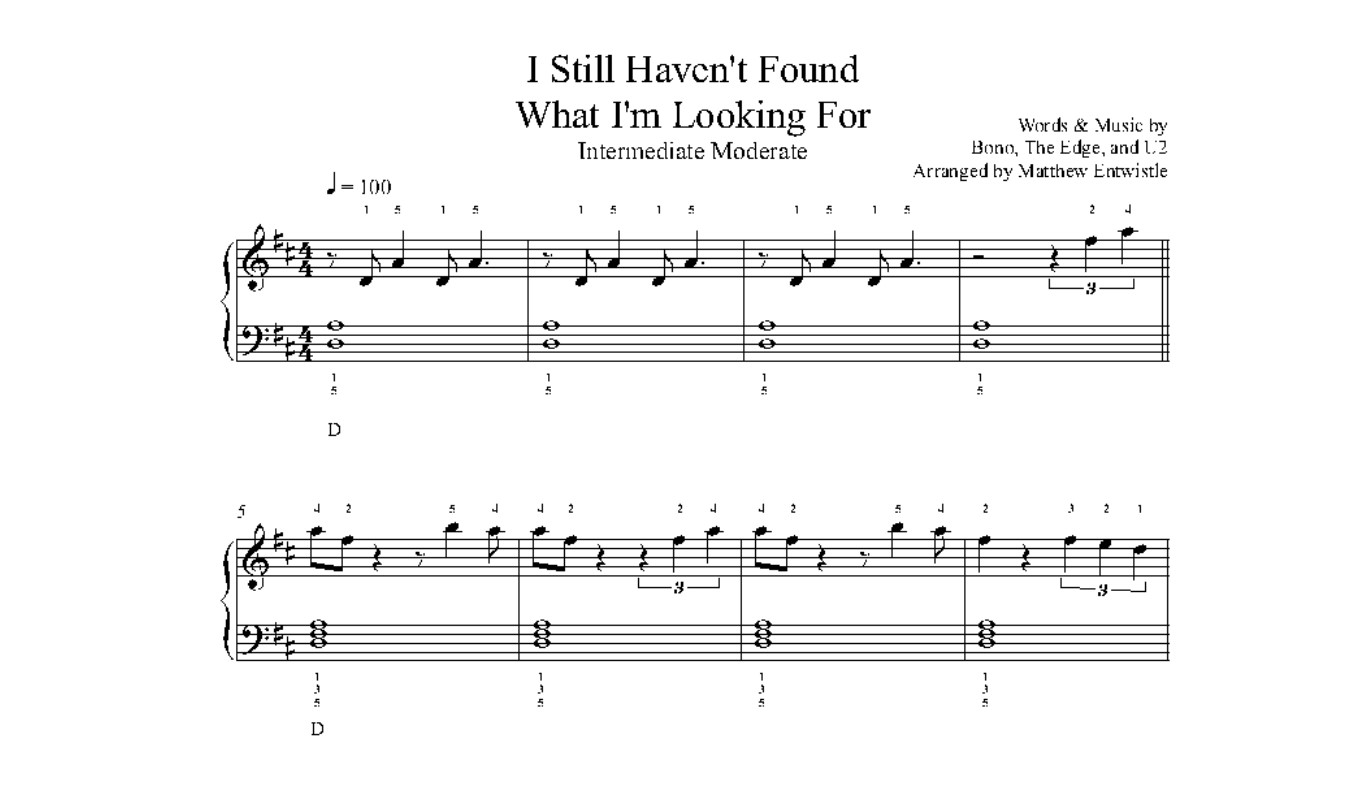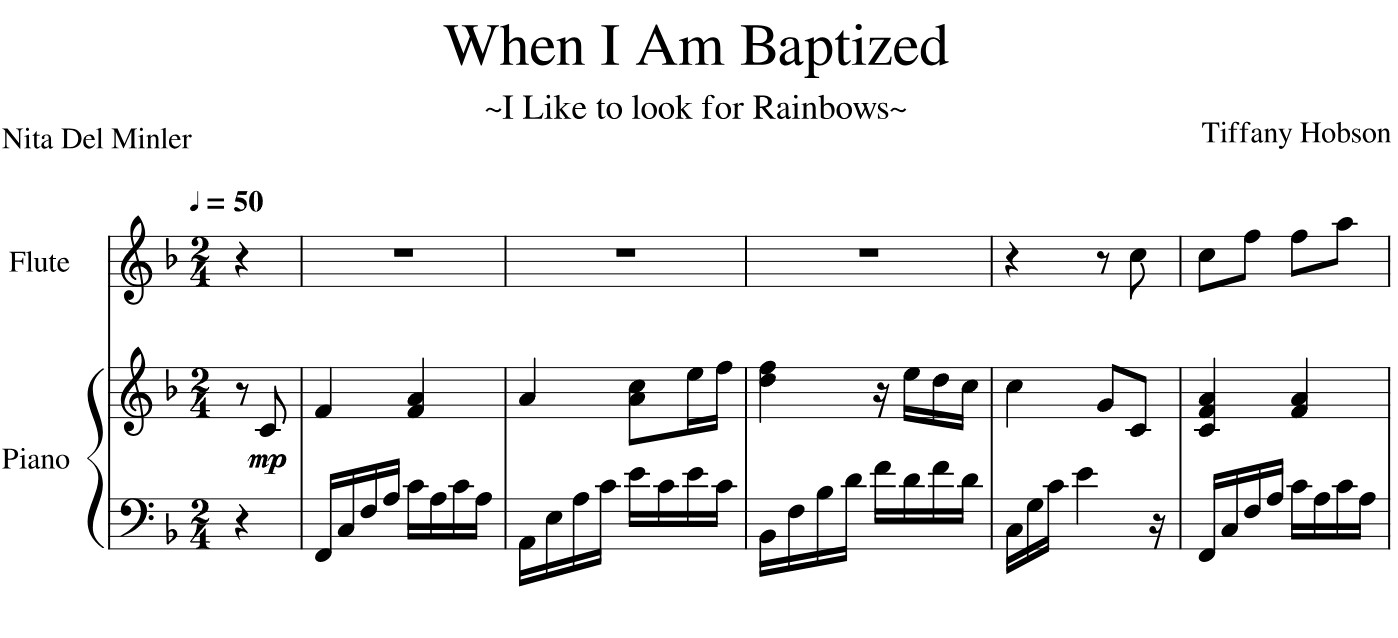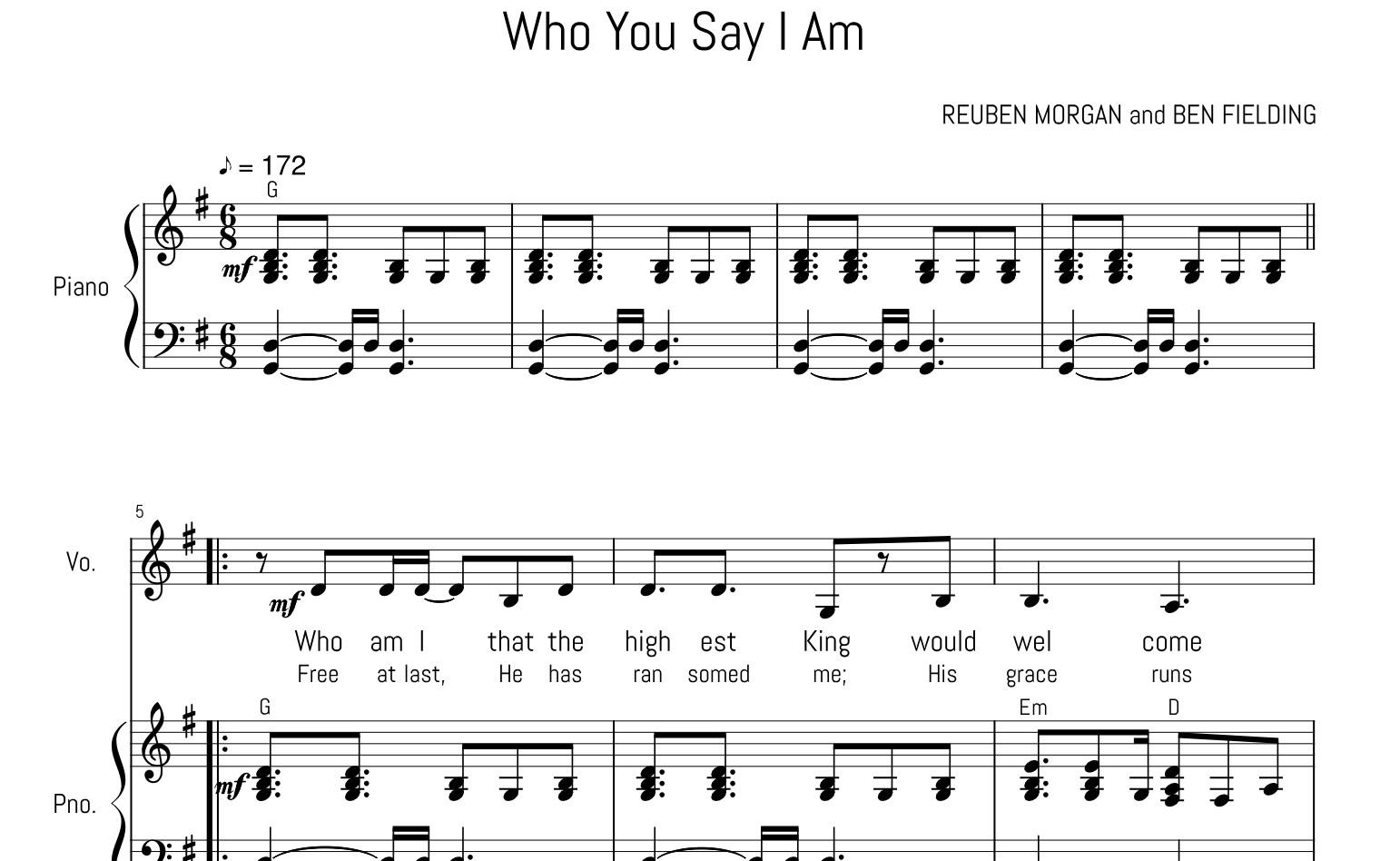Home>Production & Technology>Music Theory>What Grade Music Theory Am I


Music Theory
What Grade Music Theory Am I
Modified: February 1, 2024
Discover your music theory grade with this simple quiz. Test your knowledge of key signatures, intervals, and more. Perfect for beginners and advanced musicians alike.
(Many of the links in this article redirect to a specific reviewed product. Your purchase of these products through affiliate links helps to generate commission for AudioLover.com, at no extra cost. Learn more)
Table of Contents
Introduction
Welcome to the fascinating world of music theory! If you’re here, you likely have an interest in understanding the intricate workings of music and how to navigate its complexities.
Music theory is the study of how music is constructed, including elements such as melody, harmony, rhythm, and form. It provides a framework for analyzing and understanding the principles behind the music we listen to or create.
One common way to measure your understanding of music theory is through graded examinations. These exams, typically offered by music education organizations or institutions, assess your knowledge and skills at different levels, allowing you to progress and develop as a musician.
In this article, we will explore the different grades in music theory and help you determine what grade you might be at based on your existing knowledge. Whether you’re a beginner just starting your musical journey or an experienced musician looking to expand your theoretical understanding, this article has something for everyone.
Keep in mind that these grades are not set in stone, and everyone progresses at their own pace. Assessing your current knowledge level can help guide your study and provide a roadmap for your musical growth.
So, let’s dive in and discover where you might be on the musical theory journey!
Understanding Music Theory Grades
Music theory grades provide a structured pathway for musicians to develop their understanding of music theory. Each grade represents a specific level of knowledge and skill, and progressing through the grades is a common way to measure musical growth.
Grades in music theory are typically denoted by numbers, with Grade 1 being the foundation level and higher numbers indicating greater complexity and depth of knowledge. These grades are often aligned with recognized music education systems or organizations.
As you advance through the grades, you will delve deeper into various aspects of music theory, including notation, scales, chords, key signatures, rhythm, and more. Along with theoretical knowledge, you will also develop practical skills such as sight-reading and aural comprehension.
It is important to note that the requirements and content of each grade may vary slightly depending on the specific music exam board or organization. However, the general progression and concepts covered are relatively consistent across the different grading systems.
Graded music theory exams typically consist of a written paper that tests your knowledge and understanding of theoretical concepts, as well as practical components that assess your ability to apply those concepts in a musical context.
While the specific curriculum and exam structure may vary, below is a general overview of the grades in music theory:
- Grade 1: The foundation level, covering basic notation, key signatures, time signatures, scales, and intervals.
- Grade 2: Building on Grade 1, this level introduces more complex rhythms, melodic dictation, and basic harmony.
- Grade 3: Expands on the previous grades with topics like major and minor keys, triads, and basic music analysis.
- Grade 4: Focuses on cadences, transposition, and more advanced harmonic concepts.
- Grade 5: This level covers topics such as modes, advanced scales, and more complex music analysis.
- Grade 6: Introduces concepts like secondary dominants, modulation, and further analysis techniques.
- Grade 7: Explores topics like extended chords, borrowed chords, and continued analysis at a more advanced level.
- Grade 8: The highest level, incorporating advanced harmonic concepts, advanced analysis, and more.
It’s important to remember that these grade levels are not definitive markers of your musical ability or talent. They simply provide a framework for structured learning and independent progress.
Now that we have a general understanding of the music theory grades, let’s move on to assessing your current knowledge level and determining what grade you might be at.
Assessing Your Music Theory Knowledge
Before determining what grade you might be at in music theory, it’s important to assess your current knowledge and skills. This will help you understand where you stand and identify areas for improvement.
Here are a few questions to consider when assessing your music theory knowledge:
- Can you read and understand basic musical notation, including key signatures, time signatures, and rhythms?
- Are you familiar with major and minor scales, including their key signatures and intervals?
- Can you identify and name intervals, such as a perfect fifth or major seventh?
- Do you understand basic harmonic concepts, such as triads and their inversions?
- Can you analyze and identify chord progressions in a piece of music?
- Are you comfortable with basic sight-reading exercises at an appropriate level for your current skill?
- Can you identify and recreate simple melodies by ear?
- Are you familiar with common musical terms and symbols, such as staccato, crescendo, or fermata?
Answering these questions will give you a sense of your familiarity with fundamental music theory concepts and skills. It’s important to remember that assessing your own knowledge can be subjective, and seeking guidance from a music teacher or mentor can provide valuable insights and feedback.
If you find that you have a solid understanding of the topics listed above and can confidently apply them in musical contexts, you may be at a higher grade level. On the other hand, if you are less familiar with these concepts or have difficulty applying them, you may be at a lower grade level.
Remember, it’s perfectly fine to be at any level of proficiency. Music theory is a lifelong journey, and everyone progresses at their own pace. The important thing is to continue learning and expanding your knowledge and skills.
Now that you have assessed your music theory knowledge, let’s explore each grade level in more detail to determine where you might be on the music theory journey.
Grade 1 Music Theory
Grade 1 music theory is the foundation level and serves as a starting point for beginners or those with a basic understanding of music theory. This grade introduces essential concepts and notation that form the building blocks for further musical study.
In Grade 1, you will learn:
- Basic musical notation, including clefs, note values, time signatures, and rests.
- Major scales and key signatures up to two sharps and flats.
- Simple time signatures like 4/4 and 3/4, and basic rhythms such as quarter notes, half notes, and whole notes.
- The concept of intervals and their names, such as seconds, thirds, fourths, and fifths.
- How to construct and notate basic triads (three-note chords) in root position.
- Understanding and using dynamic markings and musical terms.
The Grade 1 music theory exam typically includes a written paper where you will be asked to identify and notate notes, intervals, and scales. You may also be asked to answer multiple-choice or short-answer questions related to musical terms and notation.
Practicing sight-reading exercises and completing exercises from reputable music theory workbooks can help develop your skills at this level. It’s also beneficial to listen to a variety of music and try to identify the elements you have learned, such as different note values or intervals.
If you feel confident in your understanding of these concepts and can apply them in written and practical exercises, you may be at Grade 1 level. However, if you find these concepts challenging or unfamiliar, it’s essential to spend time studying and practicing before moving on to the next grade.
Remember, the journey through music theory is a gradual process, and taking the time to build a strong foundation in Grade 1 will set you up for success as you progress to higher levels.
Now that we have explored Grade 1 music theory, let’s move on to Grade 2 and continue our journey through the music theory grades.
Grade 2 Music Theory
Grade 2 music theory builds upon the foundation established in Grade 1 and expands your understanding of musical concepts and notation. It introduces new elements that enhance your knowledge and enable you to explore music more deeply.
In Grade 2, you will learn:
- More complex rhythmic patterns, including eighth notes, dotted rhythms, and rests.
- Additional major and minor scales, with key signatures up to three sharps and flats.
- Simple melodic dictation, where you can write down short musical phrases by ear.
- Harmonic concepts, such as the tonic, dominant, and subdominant chords in major and minor keys.
- Primary and secondary triads in root position and inversions.
- Basic score reading skills, including identifying notes and rhythms in musical notation.
The Grade 2 music theory exam typically includes a written paper, which may include questions on intervals, scales, rhythmic notation, and basic harmony. You may also be asked to complete short musical dictation exercises or answer questions related to musical terms and symbols.
Practicing sight-reading exercises and completing exercises from reputable music theory workbooks can help develop your skills at this level. It’s also beneficial to listen to music and try to identify key signatures, chord progressions, and melodic patterns.
If you find that you can confidently apply the concepts listed above and demonstrate a good grasp of basic music theory principles, you may be at Grade 2 level. However, if you struggle with these concepts or find them challenging to understand and apply, additional focused practice and study will help you progress.
Remember, each grade in music theory builds upon the previous one, so it’s important to solidify your knowledge and skills at each stage before moving forward. Take the time to practice, engage with music, and seek guidance from teachers or mentors to enhance your understanding.
Now that we have explored Grade 2 music theory, let’s continue moving up the grades and discover what lies ahead in Grade 3.
Grade 3 Music Theory
Grade 3 music theory takes your musical understanding to the next level by introducing more advanced concepts and building upon the knowledge acquired in previous grades.
In Grade 3, you will learn:
- Additional major and minor scales and their key signatures, including scales with up to four sharps and flats.
- The concept of tonality and tonal center in music.
- Identification and notation of intervals, including compound intervals.
- The ability to analyze and identify chord progressions in major and minor keys.
- The construction and notation of major and minor triads in root position and inversions.
- Basic music analysis, including identifying cadences and chord functions.
The Grade 3 music theory exam typically includes a written paper that tests your knowledge and application of the above concepts. You may be asked to complete exercises on interval identification and notation, analyzing chord progressions, and answering questions related to tonality and musical analysis.
Practicing sight-reading exercises and engaging in harmonizing melodies using the knowledge of triads can help improve your skills at this level. Additionally, listening to a wide range of music and analyzing chord progressions and harmonic structures can deepen your understanding.
Confidence in your ability to apply the concepts and skills mentioned above would suggest that you are at the Grade 3 level. However, if you find these concepts challenging or unfamiliar, dedicated practice and study will help you progress further.
Remember, the journey through music theory is a gradual process, and consistent practice and dedication are key. Embrace the opportunity to develop your musical understanding and continue to seek guidance and support from teachers, mentors, or fellow musicians.
With Grade 3 music theory under our belt, let’s move ahead and explore the next level: Grade 4!
Grade 4 Music Theory
In Grade 4 music theory, you will delve deeper into the intricate world of music and expand your understanding of complex concepts and notation. This level builds upon the foundational knowledge gained in previous grades and challenges you to explore music with a more analytical mindset.
Here are some key concepts you will encounter in Grade 4:
- Extended major and minor scales, including scales with up to six sharps and flats.
- The concept of modes, such as Dorian and Mixolydian.
- Transposition of melodies and chords to different keys.
- Harmonic progressions, including the use of secondary dominants and modulation.
- Understanding the characteristics of different musical forms, such as binary and ternary.
- Notating and identifying cadences and phrases.
The Grade 4 music theory exam typically includes a written paper that tests your knowledge and application of these concepts. You may encounter questions related to scales, modes, transposition, harmonic progressions, and musical analysis.
Practicing sight-singing exercises and analyzing musical scores can help enhance your skills at this level. It is also beneficial to explore music from various genres and time periods to gain a deeper understanding of different musical forms and structures.
If you feel confident in your ability to analyze musical phrases, identify key signatures, transpose melodies, and understand harmonic progressions, you may be at Grade 4 level. However, if you find these concepts challenging or need further study, don’t worry! Building a solid foundation in these areas will set you up for success in higher grades.
Remember, music theory is a journey of continuous growth and exploration. Embrace the challenges and enjoy the process of deepening your understanding of music.
Now that we have explored Grade 4 music theory, let’s journey further and discover what awaits in Grade 5!
Grade 5 Music Theory
Grade 5 music theory represents a significant milestone in your musical journey. It encompasses a more advanced level of understanding and paves the way for further exploration and study of music theory.
Here are key components you will encounter in Grade 5:
- Advanced major and minor scales, including scales with up to seven sharps and flats.
- Harmonic and melodic minor scales and their key signatures.
- Understanding and identifying chords, including augmented, diminished, and suspended chords.
- Harmonic analysis of musical passages, identifying chord progressions and their functions.
- Notating and understanding different types of intervals, including compound intervals.
- Knowledge of ornaments and articulations and their use in musical interpretation.
The Grade 5 music theory exam often includes a written paper that assesses your knowledge and application of these concepts. You may encounter questions related to scales, chords, interval identification, harmonic analysis, and musical notation.
Practicing sight-singing exercises and studying music from various genres and historical periods will further develop your skills at this level. Focusing on listening to and analyzing music can also help refine your ability to identify chord progressions and understand their functions within a piece.
If you feel confident in your ability to analyze chord progressions, identify and notate intervals, and understand advanced scales and key signatures, you may be at Grade 5 level. However, if you find these concepts challenging or need further study, dedicate time to practice and seek guidance from music teachers or mentors.
Remember, Grade 5 music theory sets a solid foundation for further exploration in advanced music theory and analysis. Embrace the complexities and enjoy the journey of delving deeper into the language of music.
Now that we have explored Grade 5 music theory, let’s continue our musical adventure and explore the intricacies of Grade 6!
Grade 6 Music Theory
In Grade 6 music theory, you will continue to deepen your understanding of music and explore more complex concepts and techniques. This level represents a significant milestone in your musical education, as you delve into advanced harmonic and analytical skills.
Here are some key components you will encounter in Grade 6:
- Extended harmonic and melodic minor scales and their key signatures.
- Augmented and diminished intervals.
- Secondary dominants and modulation to closely related keys.
- Continued exploration of chord progressions and their functions.
- Understanding complex time signatures and conducting patterns.
- Analysis of musical examples in different musical forms.
The Grade 6 music theory exam typically includes a written paper that tests your knowledge and application of these concepts. You may encounter questions related to advanced scales, interval identification, harmonic analysis, modulation, and musical forms.
Practicing sight-singing exercises, engaging in active listening, and analyzing musical scores with complex chord progressions will further strengthen your skills at this level. Additionally, studying and playing music from different periods and genres will enhance your understanding of musical form and structure.
If you feel confident in your ability to analyze complex harmonic progressions, identify extended scales and intervals, and understand the intricacies of modulation and musical forms, you may be at Grade 6 level. However, if you encounter challenges in these areas, don’t be discouraged! Continued practice and study will help you progress.
Remember, Grade 6 music theory opens doors to more advanced musical studies and allows for a deeper appreciation and understanding of music. Embrace the opportunity to explore the complexities of musical language and enjoy the journey of continual growth and discovery.
With Grade 6 under our belt, let’s continue our musical voyage and embark on the challenges of Grade 7!
Grade 7 Music Theory
Grade 7 music theory marks a significant step in your musical journey, as it delves into advanced concepts and techniques. At this level, you will explore complex harmony, intricate analysis, and refined musical skills.
Here are key components you will encounter in Grade 7:
- Advanced chromatic harmonies and their analysis.
- Extended modulation techniques and analysis of modulatory passages.
- Understanding and identifying non-harmonic tones and their functions.
- Detailed analysis of musical forms, including binary, ternary, and rondo.
- Advanced score reading and analysis skills.
- Detailed knowledge of musical terminology and performance directions.
The Grade 7 music theory exam typically includes a written paper that assesses your understanding and application of these concepts. You may encounter questions related to harmonic analysis, modulation, non-harmonic tones, musical forms, and score reading.
Practicing sight-singing exercises and engaging in comprehensive score study will further enhance your skills at this level. Taking the time to deeply analyze and understand the structure and harmonic progression of musical compositions will be an invaluable tool in your growth as a musician.
If you feel confident in your ability to analyze complex harmonic progressions, identify non-harmonic tones, and have a deep understanding of musical forms and terminology, you may be at Grade 7 level. However, if you encounter challenges in these areas, continue to practice and seek guidance from teachers or mentors to further develop your skills.
Remember, Grade 7 music theory allows you to unravel the intricate layers of music and provides a deeper insight into its construction and interpretation. Embrace the opportunity to refine your musical knowledge and enjoy the rewards that come with it.
Now that we have explored Grade 7 music theory, let’s venture further and uncover the complexities of Grade 8!
Grade 8 Music Theory
Grade 8 music theory signifies an advanced level of musical knowledge and understanding. It requires a comprehensive understanding of complex musical concepts and the ability to analyze music in depth. Achieving Grade 8 is a significant accomplishment and demonstrates a high level of proficiency in music theory.
Here are key components you will encounter in Grade 8:
- Advanced chromatic harmony and its analysis, including substitution chords and extended tonalities.
- Detailed analysis of musical forms, including sonata form, theme and variations, and fugue.
- Advanced modulation techniques and analysis.
- Extended knowledge of musical terminology, symbols, and performance directions.
- Understanding of different styles and historical periods of music.
- In-depth score reading, including multiple voices and intricate rhythms.
The Grade 8 music theory exam typically includes a written paper that assesses your understanding and application of these concepts. You may encounter questions related to advanced harmony, modulation, musical forms, score analysis, and musical terminology.
Practicing sight-singing exercises, analyzing scores from different musical styles, and engaging in active listening will further enhance your skills at this level. By immersing yourself in a wide range of musical compositions, you will develop a deeper appreciation for the intricacies of musical structure and interpretation.
If you feel confident in your ability to analyze advanced harmonic progressions, navigate complex musical forms, and have a comprehensive understanding of musical terminology and symbols, you may be at Grade 8 level. However, remember that continuous learning and growth are essential in the world of music, so never stop exploring and honing your skills.
Grade 8 music theory sets a solid foundation for pursuing further musical studies, including university-level music programs or professional music careers. It showcases your dedication, commitment, and expertise in the realm of music theory.
Congratulations on reaching this level! Embrace the challenges and joys that come with Grade 8 music theory, and continue to fuel your passion for music.
As we conclude our exploration of the music theory grades, remember that regardless of your current level, the journey of music theory is never-ending. Enjoy the pursuit of knowledge, engage with music in all its forms, and let the language of music guide you on your musical endeavors.
Advanced Music Theory Levels
Beyond the graded music theory levels, there is a vast realm of advanced music theory that offers endless opportunities for exploration and specialization. These advanced levels are often pursued by musicians who have achieved a solid foundation in the graded levels and wish to delve deeper into specific areas of interest or academic study.
Some of the advanced music theory levels and areas of focus include:
- Counterpoint: This level explores the art of writing multiple melodic lines that intertwine harmonically, often referred to as counterpoint. It involves the study of strict rules and guidelines set forth by composers such as Johann Fux and J.S. Bach.
- Orchestration: This level delves into the art of arranging and scoring music for different instruments and sections of an orchestra. It involves studying instrument ranges, techniques, and timbral possibilities to create rich and balanced orchestral compositions.
- Form and Analysis: This level focuses on the analysis of musical forms and structures, such as sonata form, fugue, and variations. It explores the intricate relationship between different sections of a composition and the overall architecture of a piece.
- Advanced Harmony: At this level, musicians examine complex harmonic progressions, extended tonalities, and non-traditional chord structures. They explore contemporary harmonic techniques and analyze the use of dissonance and tension in modern compositions.
- Composition and Music Theory Integration: This level involves the integration of music theory concepts into the craft of composition. Musicians explore various compositional techniques, harmonic practices, and structural considerations to create original and expressive musical works.
Advanced music theory levels often require independent study, mentorship, and engagement with scholarly literature and academic resources. Universities and conservatories offer specialized programs and courses for musicians who wish to pursue advanced studies in music theory.
By immersing yourself in advanced music theory, you can deepen your understanding of music’s inner workings, broaden your artistic horizons, and enhance your abilities as a musician, composer, or scholar. It allows you to engage with music on a profound level, analyze and appreciate the complexities of various musical genres and styles, and contribute to the ongoing conversation in the field of music theory.
Remember, advanced music theory is a lifelong pursuit and a journey of continual growth and development. Embrace the opportunity to expand your musical knowledge, nurture your creativity, and explore the limitless possibilities that await in the realm of advanced music theory.
As you embark on this advanced musical journey, remember to enjoy the process, stay open to new ideas, and let your passion for music guide you.
Conclusion
Music theory is a fascinating and essential aspect of music education, providing a framework for understanding and analyzing the intricacies of music. The graded music theory levels offer a structured pathway for musicians to develop their knowledge and skills, guiding them towards a deeper understanding of musical concepts.
Starting from the foundation level of Grade 1, musicians progress through each grade, building upon their knowledge and expanding their repertoire of theoretical understanding. From basic notation and scales to advanced harmonic concepts and musical analysis, each grade offers new challenges and opportunities for growth.
Assessing your own music theory knowledge is crucial in understanding your current level. By identifying areas where you may excel or need improvement, you can tailor your studies and practice accordingly.
Beyond the graded levels, advanced music theory offers a vast realm of specialization and exploration. From counterpoint to orchestration, form and analysis to advanced harmony, musicians can delve deeper into their specific areas of interest and expertise.
Regardless of your current level or aspirations in music theory, the journey is never-ending. Embrace the joy of learning, stay curious, and nurture your passion for music. Engage with music in all its forms, actively listen, analyze, and continue to explore the vast world of music theory.
Whether you are an aspiring musician, a dedicated student, or a seasoned professional, music theory serves as a valuable tool to enhance your understanding and appreciation of music. It allows you to communicate, analyze, and create music with greater depth and intention.
So, embrace the beauty and challenges of music theory, and let it guide you on a lifelong journey of musical growth and creativity.











